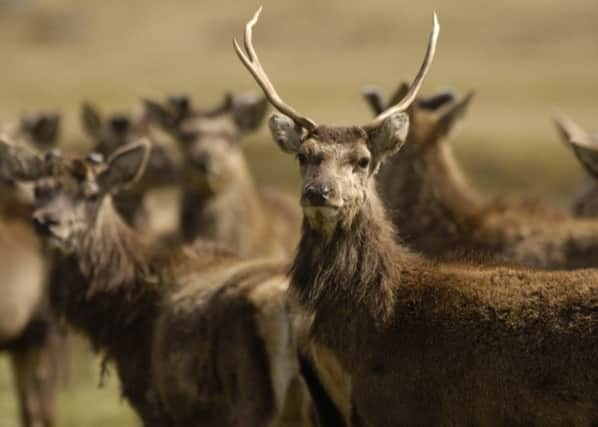There'll be a deer price to pay if we don't grasp issue '¨of overpopulation


The review, by the government’s independent nature conservation advisors, Scottish Natural Heritage (SNH), follows a catalogue of reports, reviews and evidence stretching back over decades that Scotland’s burgeoning deer population is inflicting an increasing toll on the natural heritage as well as on farming, crofting, forestry and road safety.
It concludes that the evidence analysed “does not enable us to be confident that present approaches will bring about early improvements in the natural heritage or deliver other potential public benefits”.
Advertisement
Hide AdAdvertisement
Hide AdSo why in Scotland do we seem reluctant to direct deer management, instead leaving it largely to “self- regulation” by landowners?
Almost uniquely in Europe, deer are managed as if they are a private hunting resource. Yet the public purse pays the bills – for example in the millions of pounds spent annually on deer fencing, road traffic collisions and protecting our most important wildlife sites.
Landseer’s iconic image perfectly captures the cultural icon that is the Victorian hunting estate – the imperious “trophy” stag majestically posing in front of the dramatic bare hills. But the reality stands in contrast to the iconography.
Scotland’s deer are stunted, often emaciated and frequently succumb to starvation in the spring. That’s because this predominantly woodland animal has been forced – as a result of overpopulation and overgrazing – to adapt to a harsh, unnaturally treeless environment
We remain largely blind to their impacts, as detailed once again in this latest review: “Grazing by deer and other herbivores is a major cause of unfavourable condition of natural features in protected areas… and deer are a major factor in limiting woodland condition.”
The focus by many landowners on shooting stags for sport, and the lack of natural predators, has led to an ever-rising red deer population. In 1955, the eminent ecologist Frank Fraser Darling suggested an optimum population of red deer for the Highlands of around 60,000; today the estimate is 400,000.
In large parts of Scotland the bare hills are a product of grazing by sheep and deer compounded by burning (for sheep, deer and grouse). This in turn leads to an impoverished ecology which negatively affects our wildlife, including the deer themselves.
Only four per cent of our country retains its native woodland and most of this miniscule fragment is under attack from deer unless behind six-foot high fences. Timber growers in Scotland have to deer fence all their plantings, a cost that competitor nations do not have to bear.
Advertisement
Hide AdAdvertisement
Hide AdThis “red deer problem” is nothing new. It has vexed politicians for more than 125 years. Back in 1892, when a “Royal Commission of Inquiry into Deer Forests” was established, there were already exchanges in the House of Lords expressing concerns about the “proliferation of deer forests and the human depopulation of highland glens”. Over the years these debates have rumbled on.
A report by SNH in 1994 suggested that the red deer population should be reduced by 100,000. Numerous deer legislation tweaks have been introduced, most recently in the Land Reform Act this year. All have tried cajoling, encouraging and pleading with landowners to manage deer in the public as well as the private interest. Yet the latest report, shows that although there has been some welcome progress, we are unlikely to see the rate and scale of change required.
So what next? The review, and it’s scrutiny in parliament, provides a golden opportunity to accelerate reform to get more from our land, for the sake of the land itself, for nature and for all the people of Scotland. This could be achieved through evolution rather than revolution.
Already a number of landowners manage to successfully combine sport shooting with improving habitats by bringing down deer densities. SNH could take advantage of its existing powers to require forward culling plans from landowners, and could be given new powers to approve culls to ensure they are in the public interest.
These modest changes would allow deer stalkers and managers to carry on as they are, but in a much more transparent and accountable manner with the aim of delivering wider benefits for all. Far from threatening livelihoods, culling more deer could open up deer stalking and venison production to a greater number of people and businesses in rural communities, while improving the health of our hills for future generations.
Mike Daniels, Head of Land Management, John Muir Trust